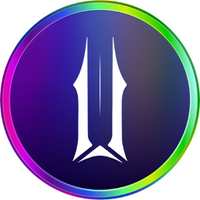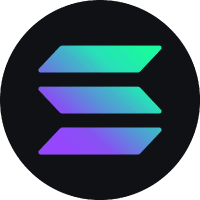
Illuvium PriceILV
ILV/USD price calculator
Live Illuvium Price Today in USD
Do you think the price of Illuvium will rise or fall today?
Illuvium Market Info
About Illuvium (ILV)
What Is Illuvium?
Illuvium is an open-world role-playing game (RPG) that has captivated the cryptocurrency domain with its innovative integration of blockchain">blockchain technology. As a decentralized platform built on the Ethereum network, it leverages the prowess of the Immutable X blockchain, offering a seamless, zero-fee framework for users to engage in a vibrant digital ecosystem. This blockchain game, characterized by its play-to-earn structure, allows users to earn ILV tokens, the native cryptocurrency of the Illuvium network, through various in-game activities.
The Illuvium game, set in a sci-fi universe, offers a rich narrative where players assume the role of hunters, exploring an alien world to uncover its secrets and capture mythical creatures known as Illuvials. These creatures, represented as non-fungible tokens (NFTs), can be collected, traded, and used in battles, fostering a dynamic gameplay experience. Illuvium promises to be a haven for both gaming enthusiasts and cryptocurrency investors, merging the realms of gaming and finance into a cohesive unit, often referred to as GameFi.
Resources
Official Documents: https://www.docs.illuvium.io/
Official Website: https://illuvium.io/
How Does Illuvium Work?
At the core of Illuvium's gameplay is the interaction with Illuvials, deity-like creatures with unique abilities and elemental affinities. Players can capture these creatures, store them in crystal shards, and even fuse them to create more powerful entities. The game features a variety of classes and affinities, each offering different abilities and bonuses, thereby encouraging players to strategize and build powerful teams for battles.
Illuvium operates on a play-to-earn model, where players can earn ILV tokens through competitions and quests. The game also features a decentralized exchange, IlluviDEX, facilitating the trade of in-game assets and ILV tokens. Furthermore, the game offers a multiplayer battle arena where users can compete to earn ILV rewards and climb the ranks.
Built using the Unreal Engine 4.26, Illuvium offers a visually stunning gaming experience with high-quality 3D graphics and fast load times. The backend infrastructure, hosted on Amazon Web Services (AWS), ensures scalability and a seamless gaming experience. The integration with Immutable X enables fast transactions and eliminates gas fees, enhancing the gameplay experience by removing frequent transactional delays.
What Is ILV Token?
The ILV token serves as the governance and utility token within the Illuvium ecosystem. While not necessary for gameplay, the ILV token facilitates governance through the Illuvium decentralized autonomous organization (DAO), known as the Illuvinati Council. Token holders can participate in the governance process, proposing and voting on various improvements to the ecosystem.
Furthermore, ILV tokens can be staked to earn distribution yields, fostering community engagement and decentralization of the DAO. The liquidity mining program of Illuvium aims to incentivize early and new adopters to participate actively in the community, offering lucrative rewards for staking tokens. Additionally, the game features a synthetic version of the ILV token, sILV, used as an in-game currency but restricted from player-to-player transactions.
Illuvium's Impact on Finance
Illuvium's emergence marks a significant milestone in the blockchain gaming industry, potentially ushering in a new era of synergy between online gaming and cryptocurrencies. As the first project to offer an AAA-rated gaming experience on the blockchain, it represents a paradigm shift in the gaming industry, integrating financial elements into the gaming ecosystem.
The project has garnered significant attention, with a remarkable 175bac00-67bd-49a6-863c-e1110c89fc24 capitalization and a high demand for ILV tokens, indicating a promising future. By merging the realms of cryptocurrency and gaming, Illuvium is poised to attract a diverse audience, including hardcore gamers, crypto enthusiasts, and the general public, potentially revolutionizing the financial dynamics of the gaming industry.
What Determines Illuvium's Price?
In the dynamic world of cryptocurrency markets, the price of assets like Illuvium (ILV) is influenced by a myriad of factors deeply rooted in the blockchain technology it operates on. One of the primary determinants of Illuvium price is the fundamental principle of supply and demand within the decentralized finance (DeFi) space. As a blockchain-based asset, the scarcity of ILV tokens can potentially drive up demand, especially considering its pivotal role within the Illuvium gaming ecosystem. Investors and gamers alike keep a close eye on market trends, and a surge in user engagement within the Illuvium platform can signify a bullish trend for the ILV token.
Market sentiment is another crucial factor that can sway the Illuvium price in the cryptocurrency market. In the blockchain industry, news, developments, and community perception play a significant role in shaping the value of digital assets. Illuvium, being at the intersection of gaming and finance, can witness price fluctuations based on updates, partnerships, and milestones achieved by the project. Moreover, the broader trends in the cryptocurrency market, including the performance of leading cryptocurrencies like Bitcoin and Ethereum, can have a ripple effect on the price trajectory of ILV, given its integration with the Ethereum network.
Furthermore, the utility and functionalities of the ILV token within the Illuvium ecosystem can be a potent determinant of its price. As a governance token facilitating decentralized decision-making and a utility token offering in-game benefits, the ILV token holds intrinsic value in the blockchain gaming space. Its integration with the play-to-earn model, where users can earn ILV tokens through various in-game activities, creates a tangible connection between gaming achievements and financial rewards. As the Illuvium platform evolves and expands, incorporating more features and partnerships, it can potentially enhance the utility and, consequently, the value of the ILV token in the cryptocurrency market.
AI analysis report on Illuvium
Illuvium Price History (USD)
 Lowest price
Lowest price Highest price
Highest price 
What is the highest price of Illuvium?
What is the lowest price of Illuvium?
Illuvium Price Prediction
When is a good time to buy ILV? Should I buy or sell ILV now?
What will the price of ILV be in 2026?
What will the price of ILV be in 2031?
Hot promotions
Global Illuvium Prices
How to buy Illuvium(ILV)

Create Your Free Bitget Account

Verify Your Account

Convert ILV to USD
FAQ
What is the use case of Illivium?
What makes Illivium unique?
Is Illivium a good investment?
How do you play the Illivium game?
Can I stake Illivium?
How are the tokens distributed?
What is the current price of Illuvium?
What is the 24 hour trading volume of Illuvium?
What is the all-time high of Illuvium?
Can I buy Illuvium on Bitget?
Can I get a steady income from investing in Illuvium?
Where can I buy Illuvium with the lowest fee?
Related cryptocurrency prices
Where can I buy Illuvium (ILV)?
Video section — quick verification, quick trading

ILV/USD price calculator
ILV resources
Bitget Insights




Trade
Earn
ILV/USDT
SpotPrices of newly listed coins on Bitget








